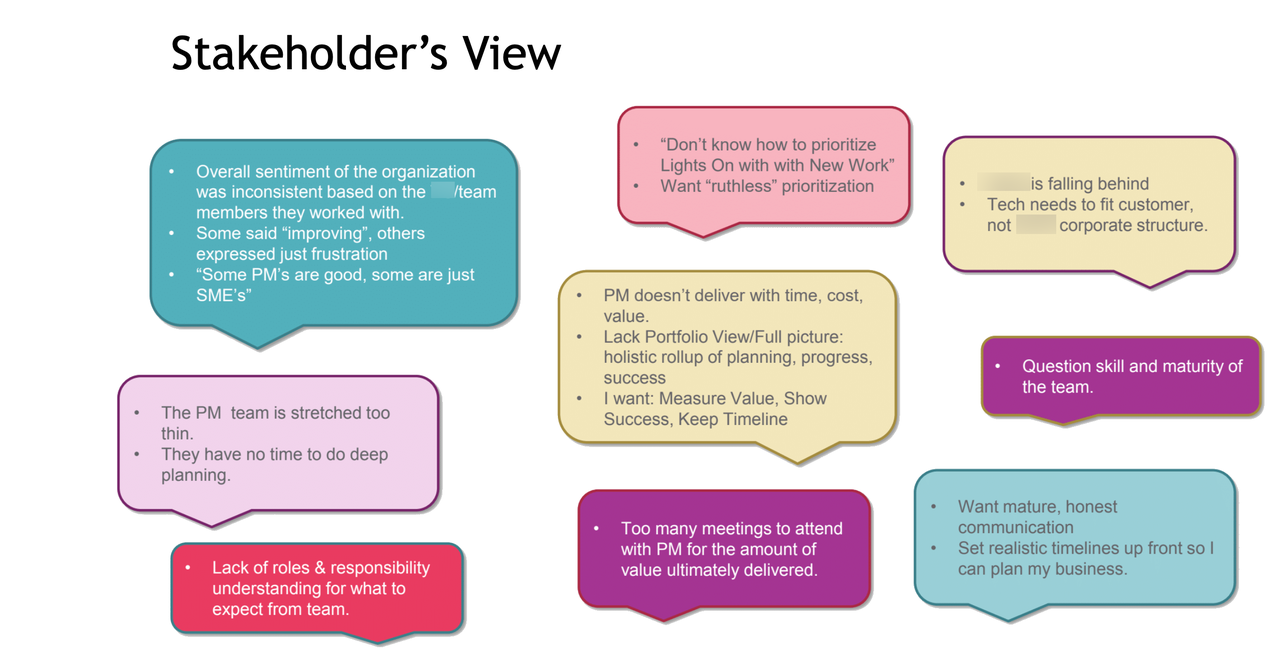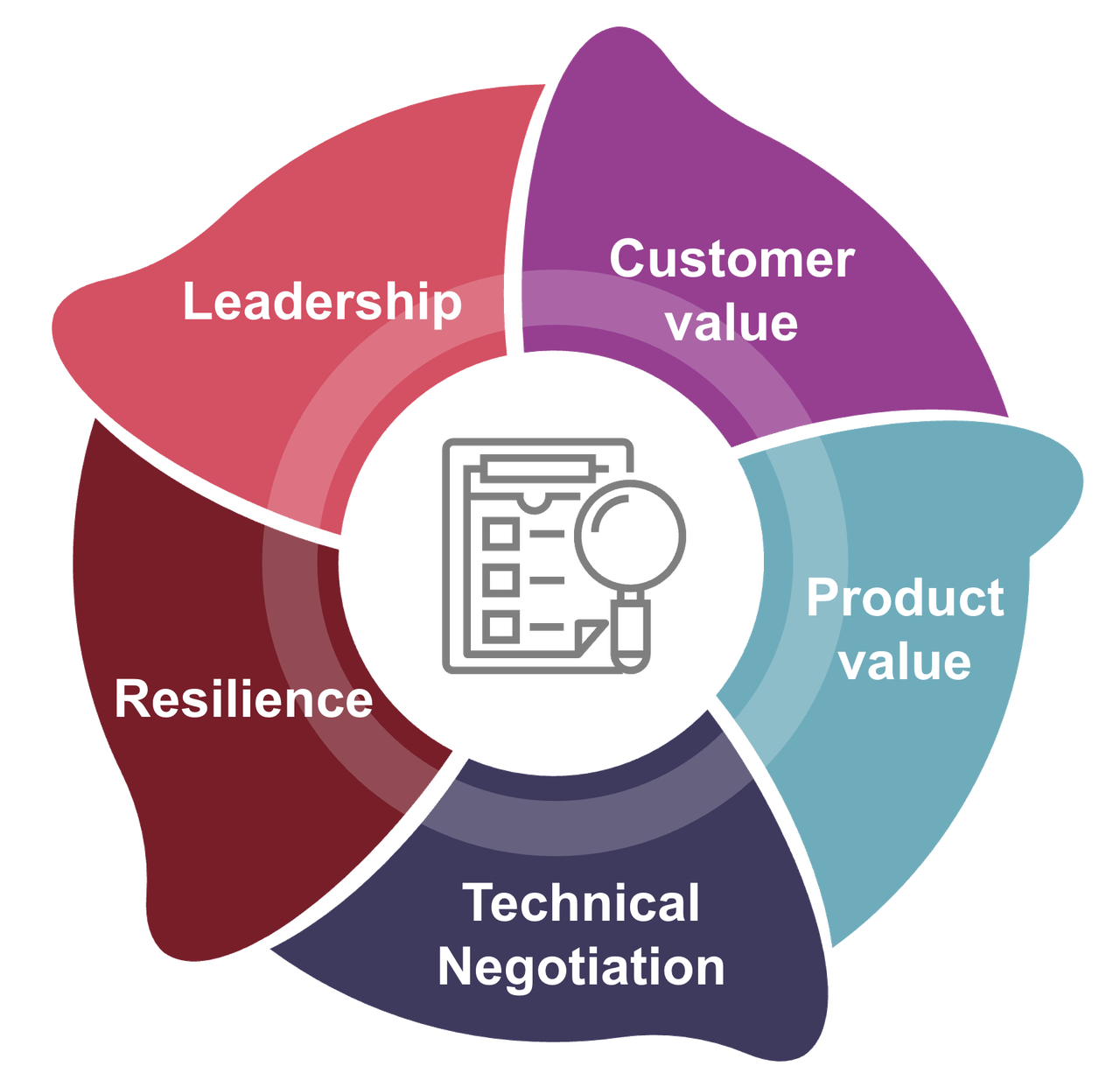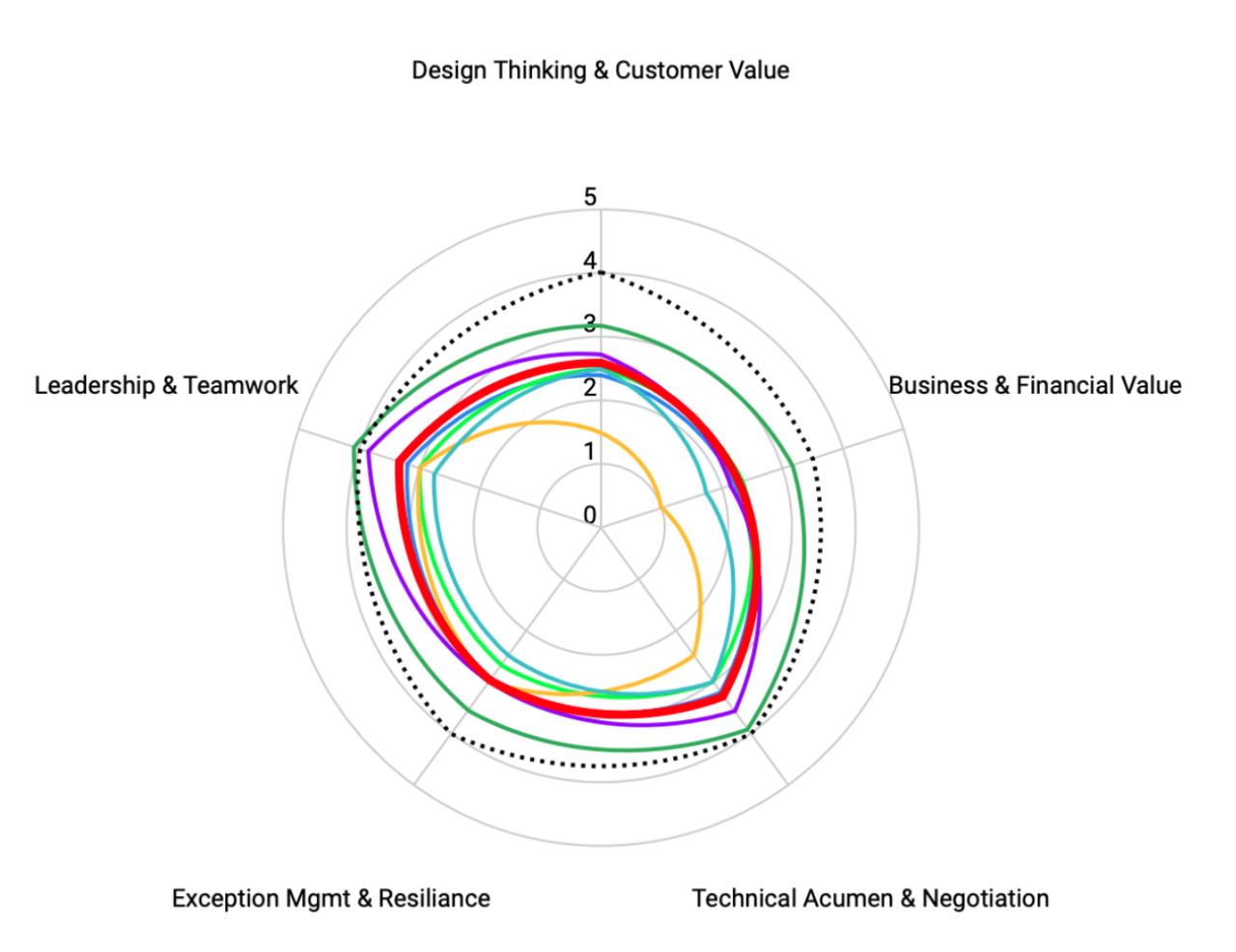Case Study: Product Management Transformation at a Global Media Company
Background
A global retail media company with more than 50 product managers faced significant challenges in its technology organization. Product timelines were slipping, product definitions lagged behind customer expectations, and internal stakeholders were dissatisfied with deliverables. Many “product managers” were former scrum masters or business analysts – capable professionals but lacking grounding in customer-centric product practices. There was no career path, inconsistent practices, and widespread role confusion between business, product, and development.
Core Challenges
- Chronic lateness of product releases and missed opportunities in feature delivery.
- Eroding market relevance, e.g., delayed integration between mobile and TV experiences resulting in lost engagement and sales.
- Overloaded teams juggling too many parallel initiatives.
- Unclear roles and decision rights, creating tension across departments.
- Insufficient product management competency and absence of structured development or mentoring.

Engagement Structure
The company’s head of IT strategy sponsored a nine-month engagement to “adopt a product mindset” and modernize the product management organization. TCGen assembled a three-person consulting team that collaborated with a steering committee of five PM directors and six senior business stakeholders across the U.S., Europe, and Asia.
The engagement included:

- Assessment Phase (3 months) Interviews with ~90 stakeholders across multiple countries, five project history reviews, and limited metric analysis (revealing serious data gaps).
- Improvement Roadmap (2 months) – Identification of key improvement initiatives focused on upskilling, process redesign, and role clarity.
- Implementation (4 months) – Launch of mentoring, training, and organizational redesign initiatives.
Strategies Employed
1. Product Management Capability Development
- Designed and applied a competency rubric across all 50 product managers.
- Delivered blind feedback to management, highlighting strengths and capability gaps at a team level.
- Introduced a monthly mentoring and training program: internal mentors (selected for specific strengths) led two-hour sessions attended by ~30 PMs on average.
Professional development included customer interviewing, requirements writing, and leading without authority. Sessions mixed short training talks and small-group workshops for hands-on practice.

2. Process and Role Clarification
- Mapped decision rights between product, business, and IT functions to reduce conflict.
- Defined boundaries for product ownership versus business accountability.
- Recommended reorganization and rationalization of roles, emphasizing senior IC hires.
- Developed heuristics for project prioritization and portfolio load management.
3. Improvement Roadmap
- Identified redundancies by mapping “process nodes” that duplicated approval or handoff steps.
- Established criteria for simplification: clear ownership, minimal sequential dependencies, and measurable value contribution per process step.
- Rationalized the organization and reduced simultaneous projects being managed by each PM

Results and Impact
While systemic results required a longer horizon, the engagement achieved immediate organizational impact:
- Greater role clarity across product and business teams.
- Improved alignment around product deliverables and decision-making.
- Reorganization and cost reduction through role rationalization and upskilling.
- A foundation for sustained learning via mentoring and rubric-driven development.
Although financial outcomes were not measurable within the project window, the company used TCGen’s findings to guide its subsequent reorganization and training vendor selection.
Tools from the Book
The following tools from Innovate Products Faster were applied during this engagement:
Circle Dot Chart - Used to map decision rights between product, business, and IT functions, clarifying who owns what decisions within the project and reducing cross-functional conflict.
Function Phase Matrix - Applied to identify roles, responsibilities, and key deliverables across project phases, helping define clear boundaries between product ownership and business accountability.
Four-Fields Map - Employed to identify process redundancies and establish simplification criteria, emphasizing how work gets done rather than just what work needs to be done.
Staffing Ratio Matrix - Used to identify overloaded teams and functional bottlenecks, enabling better resource allocation and project prioritization heuristics.
Project Retrospective Methodology - Applied during the assessment phase to conduct the five project history reviews, helping build consensus around high-value improvements.
